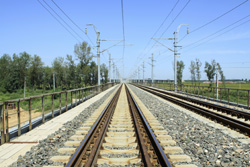Ultrasonic examination of rail welds
Most modern railways, including the European rail network, use continuous welded rail (CWR) in which the rails are welded together to form an uninterrupted piece that can be several kilometres long. Welded rails are more expensive than jointed tracks but they reduce friction, increase safety and have much lower maintenance costs. However, increasing rail speeds, traffic and loads are causing a rise in the number of rail breaks across the European network. Visual inspection is superficial and subjective. There was previously no non-destructive testing (NDT) technique for volumetric examination of the aluminothermic rail welds in the CWR system, and so these welds were not volumetrically examined in any EU country. EU-funded scientists provided the missing technology within the context of the RAILECT project. The RAILECT device uses phased-array ultrasound technology relying on multiple independent transducers rather than a single one and automatic defect recognition (ADR) software. It is a rapid clamp-on system designed to fit the European standard rail type UIC 60 for medium and heavy traffic loads. With automatic deployment of probes, rapid interpretation and analysis of data, and classification of welds with criteria for 'go – no go', a weld can be evaluated from start to finish within 20 minutes. Further optimisation should bring that time down to five minutes. Successful field trials demonstrating fast and effective volumetric inspection of aluminothermic rail welds have spawned widespread interest within the railway industry. Implementation of the RAILECT device is expected to save the industry inestimable time and money while ensuring the safety of EU citizens travelling by rail.







